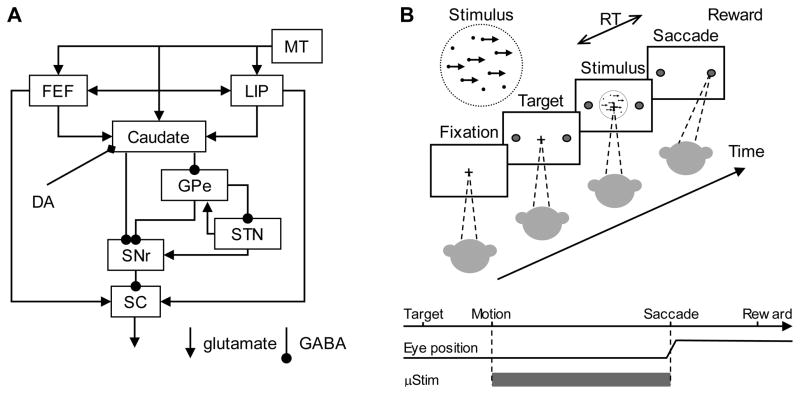Figure 1. Simplified oculomotor system diagram (A) and the behavioral task (B).
A. A schematic drawing illustrating the major connections of the oculomotor basal ganglia for saccade control. Abbreviations: MT: middle temporal visual area; LIP: lateral intraparietal cortex; FEF: frontal eye field; GPe: external segment of the globus pallidus; STN: subthalamic nucleus; SNr: substantia nigra pars reticulata; SC: superior colliculus; DA: dopamine. B. The monkey decides the direction of random-dot motion and then responds, at a self-determined time, by making a saccade to foveate one of two choice targets. Saccades to the target in the direction of coherent motion (assigned randomly for 0% coherence) are followed by juice reward. Electrical microstimulation is delivered during motion viewing and terminated when the monkey makes a saccade.

